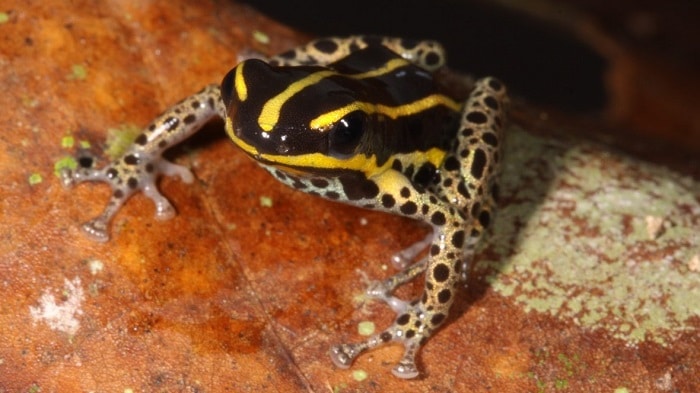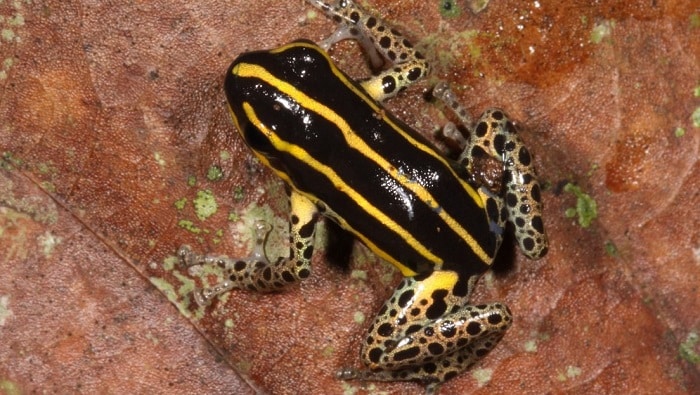According to Ministerio del Ambiente - Perú, the frog, Ranitomeya hwata is about 15 mm in length and is the smallest species in the Ranitomeya genus.
A new species of poison frog has been discovered in the Alto Purus National Park in Peru, a protected natural area in the country that is managed by Sernanp Oficial. According to Ministerio del Ambiente – Perú, the frog, Ranitomeya hwata is about 15 mm in length and is the smallest species in the Ranitomeya genus.
The frog is known for its bright and vivid coloration, including bright yellow dorsal stripes, a black band that separates the gular region from the belly and a mottled ventral pattern.

Ranitomeya hwata. Photo by Juan Carlos Chaparro/Peruvian government
It is known to inhabit native bamboo forests on the Guadiana genus and uses the hollow chambers of the bamboo, which collect water, to reproduce. The scientists say that males recruit multiple females per breeding site in a display of polygynous behavior, according to a press release put out by the Peruvian government.
The research was conducted by Peruvian researcher Roberto Gutiérrez as well as Evan Twomey (Goethe University Frankfurt, Germany), Paulo R. Melo-Sampaio (Museu Nacional, Universidade Federal do Rio de Janeiro, Brazil), Jason L. Brown (Southern Illinois University, USA), Santiago Castroviejo-Fisher (University of Seville, Spain), Giussepe Gagliardi-Urrutia (Instituto de Investigaciones de la Amazonía Peruana), José M. Padial (University of Granada and American Museum of Natural History), Juan C. Chaparro (Museum of Biodiversity of Peru) and Roberto Gutiérrez Poblete (researcher at the Museum of Natural History of the National University of San Agustín de Arequipa and specialist of Sernanp).



